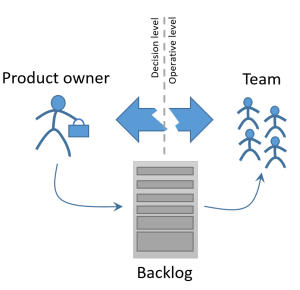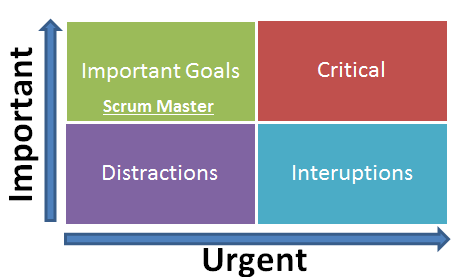
This is a post about how to manage yourself and being a better Scrum Master. In short, this means that you:
- always keep an up-to-date, personal todo-list
- follow up on that todo-list.
Read on, for the slightly longer version…
The other tasks
An appreciated quality in a Scrum Master (or project manager or really any responsible leader) is the ability to keep track of things that needs to be done, and make sure that they happen. Now, I am not talking about things that should go on the teams Kanban board, but rather other stuff for which the Scrum Master typically is responsible: talk to people in the project, discuss with stake holders outside the project, book meetings, arrange team activities, negotiate with resource owners, etc.
(It does not have to be the Scrum Master that performs these tasks, but with a team of developers, there is a non-negligble risk that nobody else is interested in doing this work.)
These tasks originates from a number of sources, but common for all of them is that somebody relies on you, as a Scrum Master, to see to it that they get done. If you do, chances are the work will run more smoothly, and it also comes with the personal benefit that people will see you as a responsible person. If you don’t… well, the really important stuff will be remembered anyway, but you just missed an opportunity to help the team with one of the things they really need you for.
Keeping track of it
One of the things that I practice, is to keep a notebook with me to every meeting. You should too. It should be a nice notebook that you feel comfortable carrying around. It is also important that you do not loose it, and just use whatever you have lying around on your desk (you will see why in a moment). And it should be with you always, even if it is just a stand-up meeting or a brief chat with a colleague. Writing stuff down helps your memory, so write at least a few lines every meeting. Now, things that you are responsible for, mark them clearly in the notebook with an arrow in the margin.
Back from the meeting, or at the very latest at the end of the day, transfer all your yet unresolved arrows from the notebook to your todo-list software. You could use any todo-list, but I tend to use Outlook, mostly because its always there and its also, automatically, on my phone. I can also flag emails directly – in Outlook or on the phone – and make them show up in the todo-list.
This transfer into the todo-list might not always be that simple, since there might be information in the notebook that needs to go with the todo item, or the todo item might need to be broken down into multiple tasks. But here’s the thing: it does not need to be perfect. As long as it is on the list, you can always go back and find the note – or the email, or the contact information, or the special circumstance surrounding the item – fairly easy.

Forgetting it
With your responsibility now on the list, and synced with your phone, you can now forget it. Don’t worry, chances are you won’t, now that you have written it down, but its okay if you do. And if you do, it is still there the next day you open Outlook or your todo-list on your phone.
Sorting it
The todo-list might need some attention, once a while, when you categorize the items, set end dates, or do whatever your todo-list software allows you to do. I have found that it helps to add information, such as phone numbers or due dates, directly to the title of the item – but really, I’m sure that you will find a way to suits your own needs.
But, and this is very important, remember to clean your list often, preferably at least once a week. Set aside time to do this, perhaps 15 minutes every Friday morning. Remove stuff that has already been done, or are no longer current. Prioritize the remaining items. If you do not, and keep adding stuff, you will soon stop using it because you just end up staring at stuff that are irrelevant.
Getting it done
Now, what do you do with your prioritized, cleaned todo list? Well, that is easy: you start from the top and work your way down.
But I can think of at least one other use for the list. Before going into a meeting – no matter what it is – scan your list of todo-items and see which ones are relevant to bring. Do you remember the notebook that comes with you into every meeting? Write the relevant items down into that notebook, and use that as a simple agenda.
Used right, the notebook-todo-list combo can function as a sort of collective memory for the team; put it into your notebook with an arrow, and that thing that you simply should not forget to bring up in the next meeting is there when you need it.
Reflecting on it
While your team mates are busy producing high quality software and are steadily moving things on your board into the ”done” column, the work you do as a Scrum Master is typically not that readily visible. Well, until you look at your own todo list, and unhide the amount of ”done” items. It is a good idea to now and then look at this list, just to get an idea of the amount of work you actually do – and it can be quite a lot, at least with a mature team that happily leaves managerial task to you.
I am sure there are other ways to keep track of things, but I have found that this combination of analogue and digital works excellent. It might be preferable to use a computer or a tablet instead of a notebook, but I have found that the notebook disturbs a meeting less than the alternatives. I have also tried personal Kanban boards, but I have found that I do not need the extra complexity – a list suits me fine.
What is your experience with todo lists from your work as a Scrum Master/project manager?











